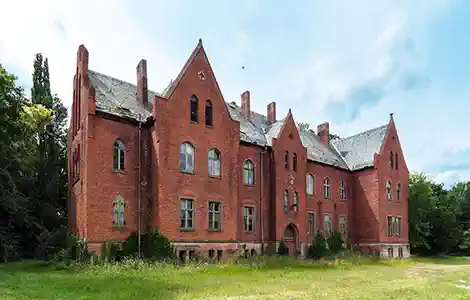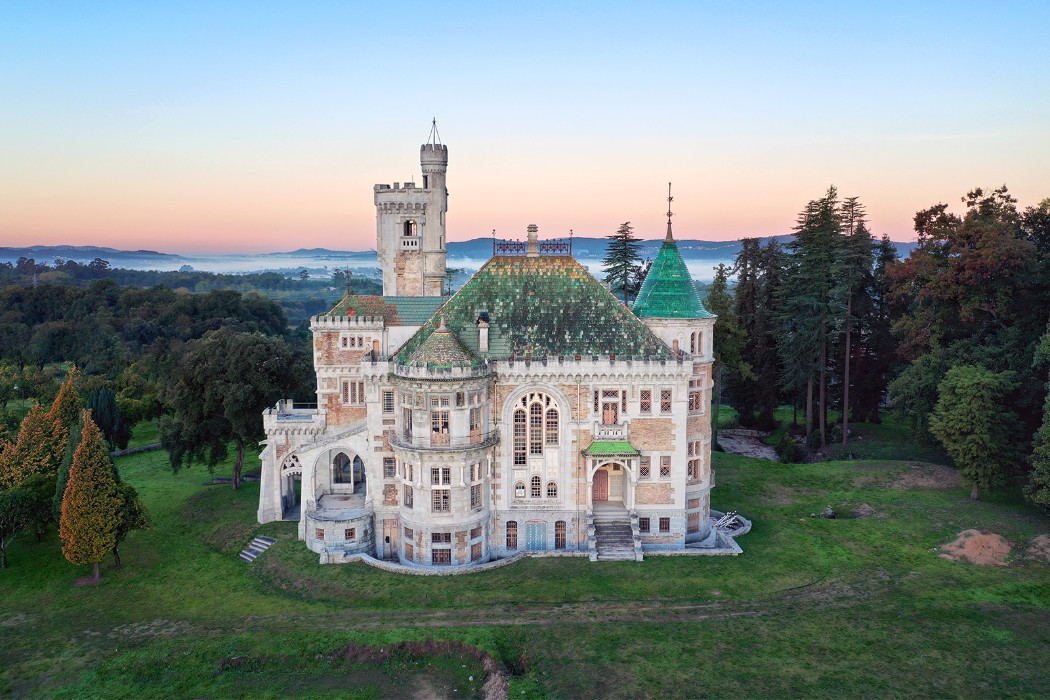-
Buy
Character properties overviewEuropean castles and manors
- United Kingdom
- All regions
- England
- Scotland
- Wales
- Northern Ireland
- Overseas
- Poland
- Czech Republic
- Italy
- France
- Germany
- Spain
- Austria
- Switzerland
- All countries
Popular overseas countries -
Sell
Free Single listingsSelling overseasPublish multiple listings
Find castle agents
Entrust the sale of your historic property to capable hands. REALPORTICO connects you with selected partners tailored to your specific needs, offering exceptional expertise in selling historic properties in the United Kingdom or abroad. You have the freedom to choose whom to collaborate with. Our presentation centered on heritage properties and supported by a local and global network, reaches a significantly broader audience compared to everyday real estate sources. - Portico Secrets Secrets
- E-Mail alert
- Blog
- Photoportico
-
Newsletter
- Extras
Castles, palaces, manor houses for sale Saxony-Anhalt
Read moreCastles, manors and country estates between Altmark and Anhalt
Saxony-Anhalt ranks among the most historically significant regions in Germany. With landscapes such as the Altmark, the Harz foothills, the Saale district and the former Principality of Anhalt, the federal state boasts a remarkable density of castles, manor houses and historic properties. According to estimates, around 1,500 formerly noble residences still exist in the rural areas and in cities such as Halle (Saale), Magdeburg and Dessau-Roßlau.
The Altmark, as one of Germany’s oldest cultural landscapes, is especially rich in manor houses and aristocratic residences. The architectural legacy of prominent families such as the von Alvensleben
continues to shape the region. Among their former properties are the Baroque Hundisburg Castle, Erxleben Manor and even long-lost sites such as Calvörde Castle. Hundisburg is considered one of Saxony-Anhalt’s most important Baroque castles. Hunting Lodge Schloss Letzlingen
, built to the designs of Friedrich August Stüler, is another prominent landmark in the region.
A journey through historic Anhalt will also take you to Ballenstedt Castle, the ancestral seat of the House of Ascania. Schloss Oranienbaum, an exceptional ensemble of Dutch Baroque and East Asian garden design, and Wörlitz Castle with its UNESCO World Heritage park, are among the region’s best-known landmarks.
Beyond these well-known sites, the rural areas of Saxony-Anhalt reveal numerous lesser-known but equally valuable manor houses waiting for new perspectives. Other hidden gems, such as Gut Wittenmoor, are poised for new life after long periods of vacancy. Not only in Mecklenburg-Western Pomerania or Schleswig-Holstein – also in Saxony-Anhalt, one sees how deeply the landed gentry has shaped the cultural landscape of Germany.
Saxony-Anhalt is both a charming cultural landscape and a region where the effects of structural change are hard to overlook - a place where life has grown noticeably quieter in many rural areas. Once shaped by knightly estates, large landowners and later industrial progress, many parts of the region are now marked by withdrawal, vacancy and silence. The town of Zeitz in the Burgenland district stands as a striking example of dramatic population decline and the visible decay of historic buildings.
Yet amidst these challenges, committed young initiatives are beginning to send out hopeful signals for a potential turnaround. It is precisely this contrast that increasingly attracts people to Saxony-Anhalt: the region holds a rare wealth of characterful historic properties - often overlooked, in need of care, but brimming with potential. To preserve this architectural heritage, fresh ideas and dedicated efforts are essential. With strong transport links to cities like Magdeburg, Halle (Saale) and Dessau-Roßlau, the conditions for new perspectives in the rural landscape are already in place.
In addition to the manors currently for sale, the works of Alexander Duncker remain a valuable resource for discovering properties with potential. Many buildings from his renowned series Country Estates, Castles and Residences of the Nobility
are located in Anhalt and the Altmark region.
Historic property owners in Saxony-Anhalt: Share your story
Are you living in, restoring or managing a historic property in Saxony-Anhalt? Share your experience and inspire fellow enthusiasts. We will create a tailored interview and publish your story free of charge on our blog. Get in touch with us!

Selling a castle in Saxony-Anhalt
REALPORTICO offers a specialised platform for castles and manors in Saxony-Anhalt, with targeted outreach to both regional and international buyers. Create your listing in just a few steps – or let one of our dedicated partner agents assist you with the sale.


